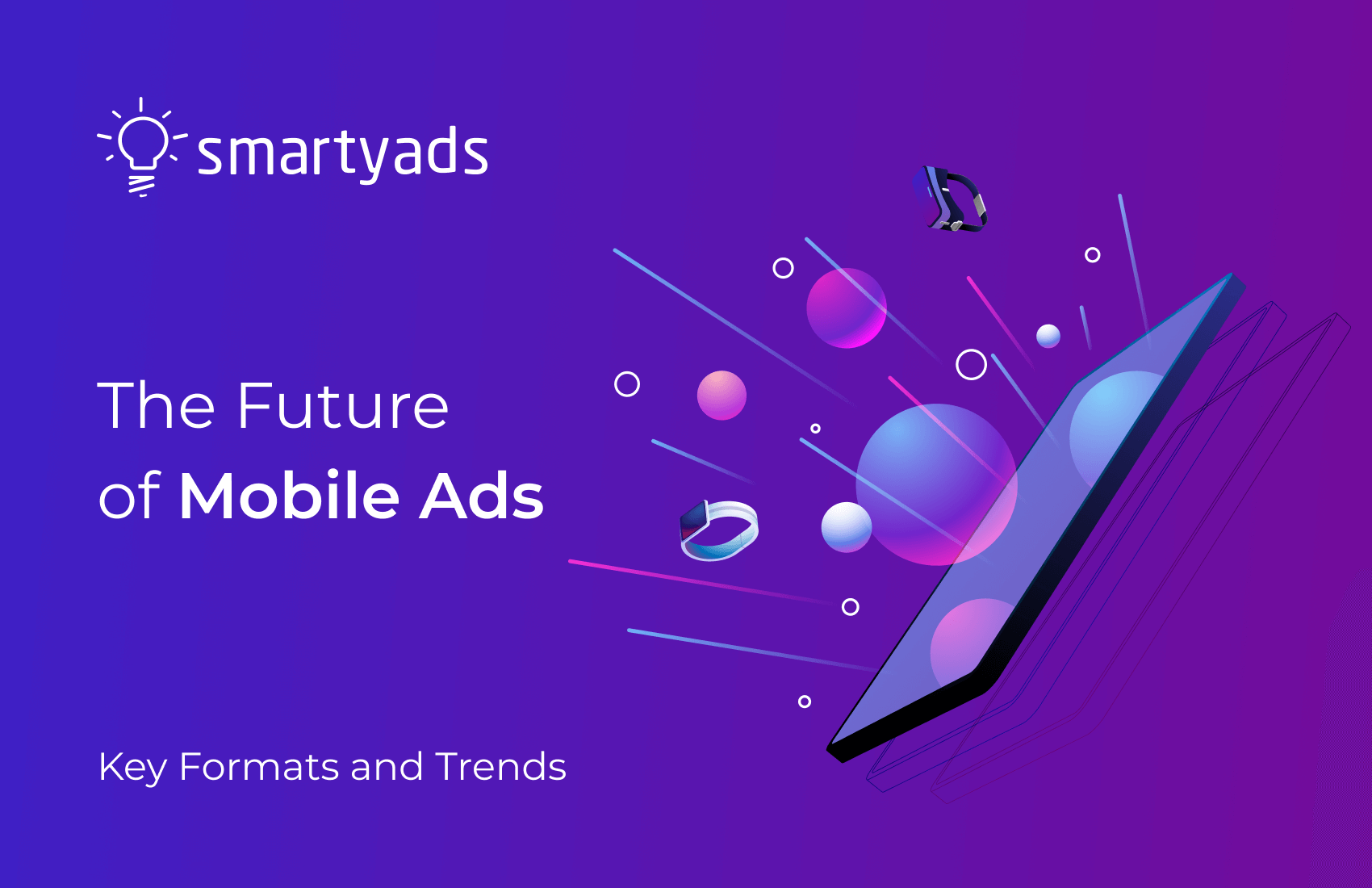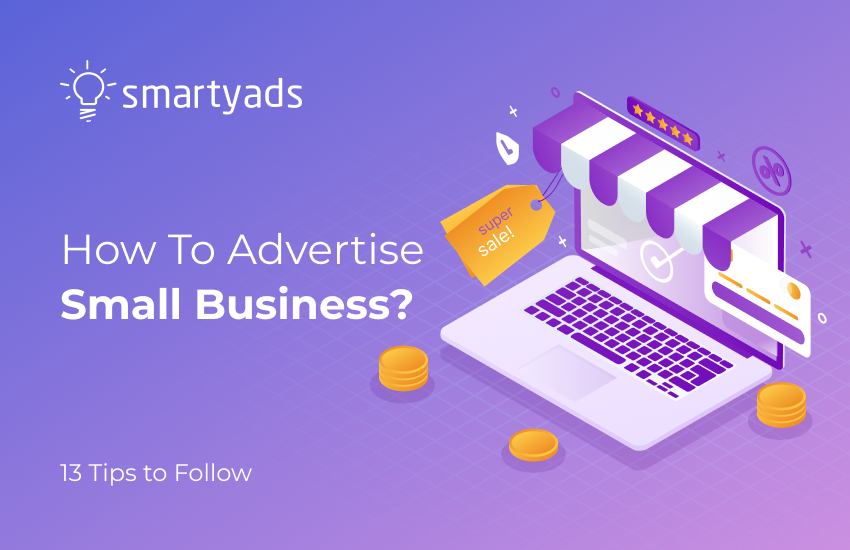What issues are likely to affect the future of mobile advertising in 2020? As IAB’s Internet Advertising Q1 2020 Revenue Report states, in 2020 we may be seeing the slowest YoY growth in a decade. The COVID 19 impact on ad tech is paradoxical and ambiguous at the same time. Advertisers are less willing to spend money on advertising outdoor-specific services and goods, however, mobile and CTV traffic volumes are experiencing an incredible surge.
Mobile devices account for most digital media consumption time. During the lockdown period, people more actively use them for gaming, content streaming, and ordering food delivery. The future of mobile advertising in 2020 is still bright and it is an exciting opportunity for media buyers to launch profitable ad campaigns. Why? Let’s take a look.
Why mobile is the future of advertising and marketing
Before the global pandemic broke in, ad tech minds were solid about the future of mobile advertising in 2020. For instance, eMarketer predicted the mobile ad spend to increase by 20,7% in 2020 compared to 2019, which accounts for nearly $105.34 billion. It was also predicted that by the end of 2020, mobile ads would make two-thirds of all digital ad spend and this is actually almost 70%. So, for mobile ads future will still be great and COVID-19 implications will not have severe damaging effects on advertising campaigns.
Natives, in-app, playable and rewarded make future of mobile advertising
According to eMarketer, ad spend on mobile display ads increased by 22.0% ($61.00 billion). Mobile video will presumably grow by 28% ($26.21 billion) and mobile search by 18.5% ($39.51 billion). Native, in-app, interactive ads and novel in-game ad formats are also among the new rising-stars that will gain traction in 2020.
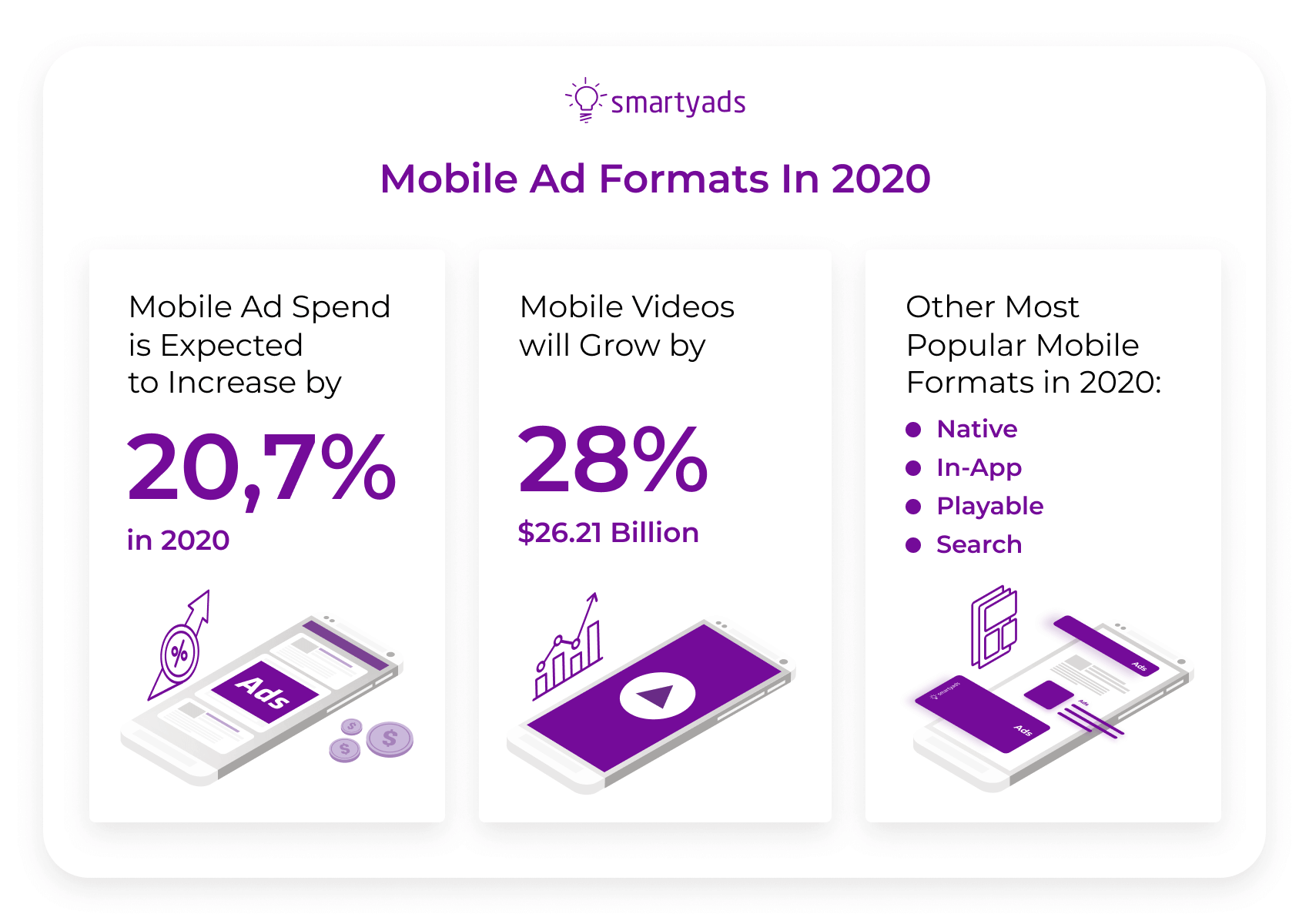
The future of mobile advertising is native, at least according to mobile native ads trends. Native advertising allows marketers to deliver ad creatives that organically fit into the publisher’s content. Mobile native ads match the form, function, and style of the app, with minimum disruption to the user experience. Native ads complement the app’s visual design and look exactly like natural content. Well-targeted native ads behave consistently and receive higher engagement from the audience because of their relevancy and personalization.
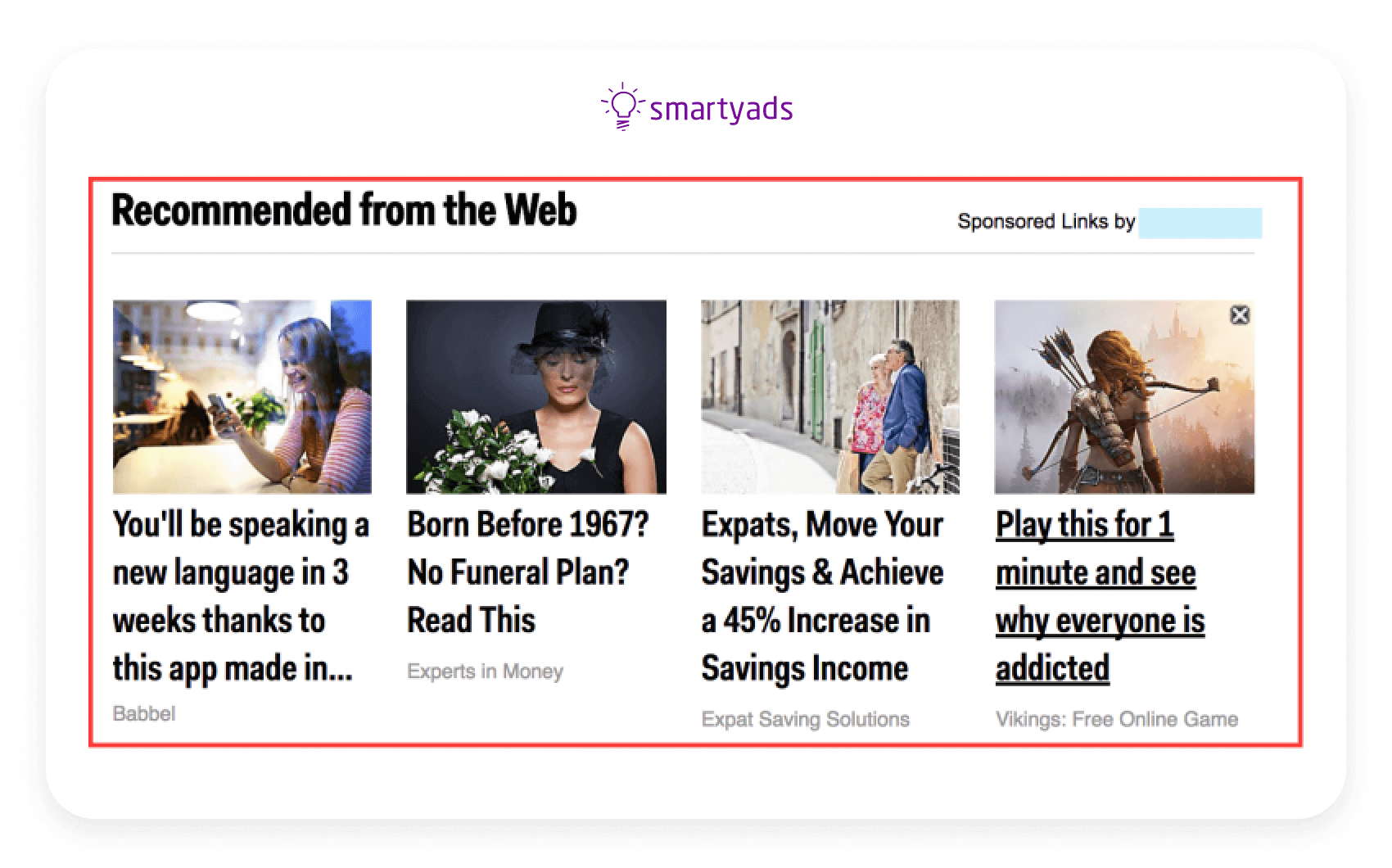 Natives are the future of mobile ads but what is native advertising in 2020? Trendy in-feed ad units, paid search ads, recommendation widgets, and promoted listings are expected to be top native ad formats in 2020. Essentially, in-feed ads will match site layout, including theme, colors, graphics, or fonts and enable flipping, clicking, swiping, and viewing. Recommendation widgets, on the other hand, will feature sponsored links that appear at the end of the feed. They can come in various formats such as images and texts.
Natives are the future of mobile ads but what is native advertising in 2020? Trendy in-feed ad units, paid search ads, recommendation widgets, and promoted listings are expected to be top native ad formats in 2020. Essentially, in-feed ads will match site layout, including theme, colors, graphics, or fonts and enable flipping, clicking, swiping, and viewing. Recommendation widgets, on the other hand, will feature sponsored links that appear at the end of the feed. They can come in various formats such as images and texts.
Tips from SmartyAds: To understand which native mobile ad format is the best for your brand, experiment with different options, analyze results, and make conclusions. Don’t hesitate to launch mobile campaigns on programmatic native advertising platforms and compare performance results time after time.
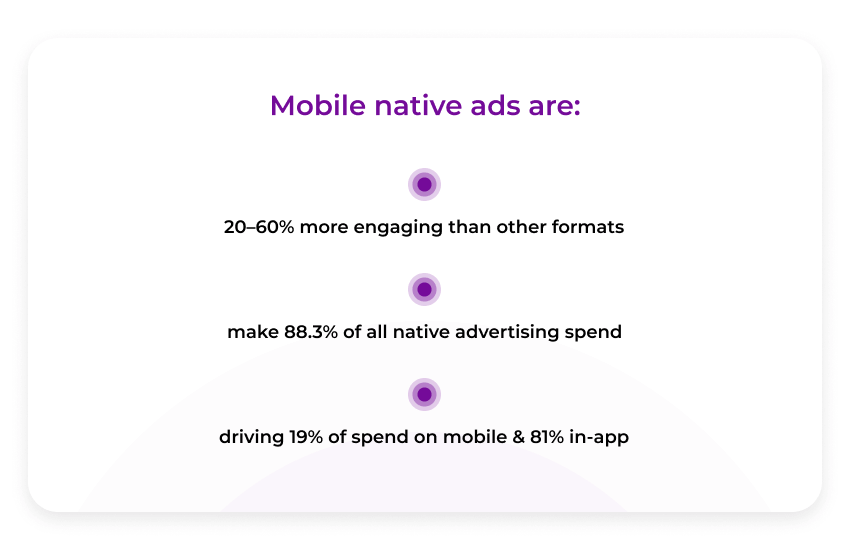
Location-based or app-based targeting
Future trends of mobile advertising will also depend on location-based campaigns. Every smartphone is equipped with GPS which enables geo-tracking. Marketers use GPS location data from smartphones and mobile devices (tablets, smartwatches) to send hyper-local content to consumers. Location-based advertising allows targeting consumers geographically not only by GPS but also by country, city, zip code, area, and state and other criteria.
Another technology that empowers location-based mobile advertising is Wi-Fi. It’s not a secret that smartphone users are constantly searching for free Wi-Fi spots. By offering free Wi-Fi, businesses and brands can broadcast their native advertising offers — coupons and promotions. It has been proven that location-based targeting doubles effectiveness of mobile campaigns. They normally result in 0,4%-0,9% click-through rate and better engagement, that’s why by the end of 2020 location-targeted ad spending only in the US will reach $31,1 billion.
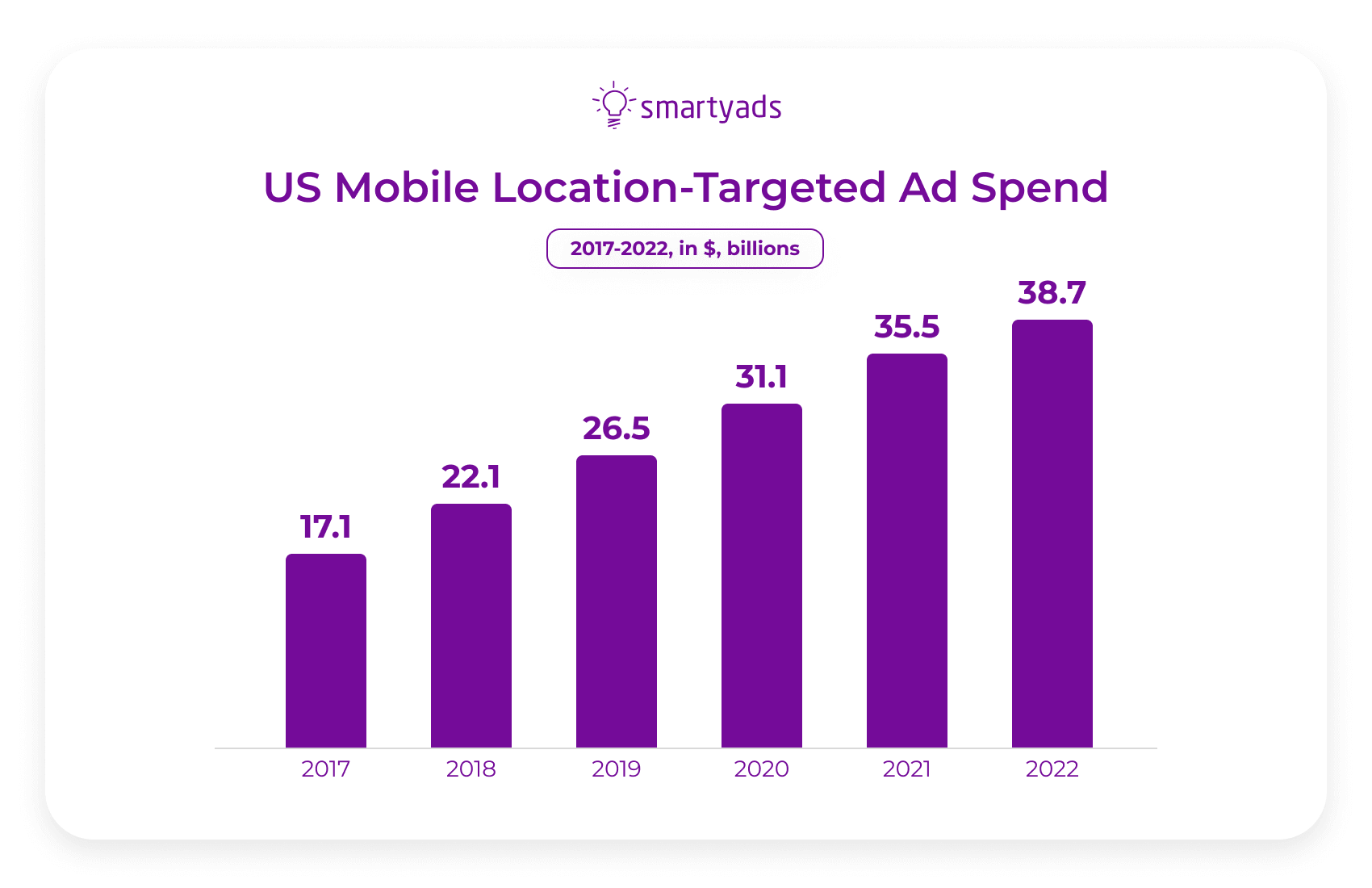
Tips from SmartyAds: Use various location marketing solutions such as traditional geo-targeting, geofencing, and beacons. Target customers visiting various physical locations like a competitor’s store or a specific part of the town.
In-app and in-game advertising
In-app formats will define the future of mobile dating advertising, advertising in the niche of gaming, news, and other popular verticals. Smartphone users are now spending more time than ever on mobile apps. The total number of mobile app downloads by the end of 2022 will reach 258 billion which is 45% higher than five years ago. By 2023 mobile app revenues are expected to reach $935,2 billion.
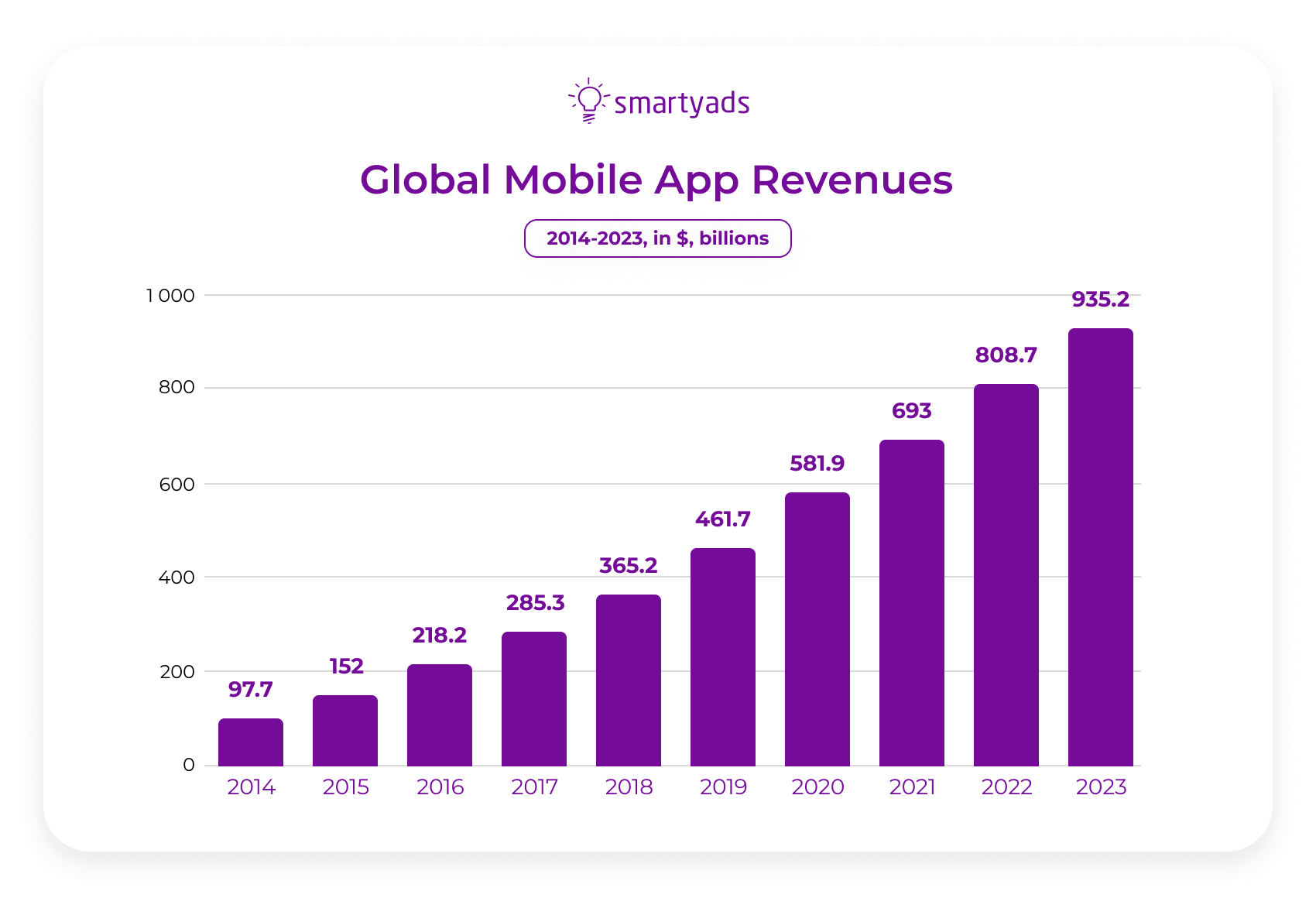
These app downloads are not only limited to social media apps like Facebook and Instagram, WhatsApp, or Snapchat. Mobile games also belong to the most popular app categories in 2020.
In-game advertising can be easily integrated into the gameplay in the form of a billboard or a short commercial. Most popular in-game creative formats are native, videos, rewarded, and playable, whereas static banners are more popular in dating and social apps.
Tips from SmartyAds: We strongly advise marketers to include “rewards-based” video ad formats into their mobile advertising tactics. According to the report, 80% of US consumers prefer opt-in ads with reward options like in-app currency or premium content. Use a video advertising programmatic platform to automate the delivery of rewarded video ads and measuring their performance.
Playable, immersive and interactive videos
Playable ads are the future of mobile phone advertising because they are preferred for monetization by 46% of leading app developers, 28% of US agency professionals say that playable ads are the most effective among other interactive formats.
Playable ads last from 15 seconds to one minute and act out as a game test drive. This ad unit allows users to try out experience of the new gameplay, test it and engage with it. After a short demo, users can click the call-to-action button and install a full version of the game. The beauty of playable ads is in extremely high conversion rates, eCPMs and engagement.
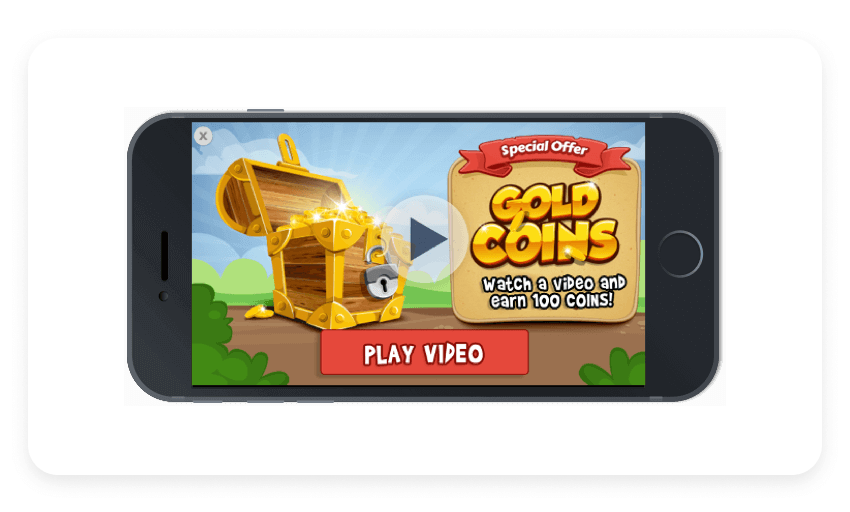
Full-screen immersive mobile ad formats are also gaining more popularity among marketers. Such ads allow viewers to flip and scroll through all kinds of media creatives such as text, images, videos, and other content. Immersive ads load instantly optimized for the mobile environment.
Tips from SmartyAds: Choose interactive mobile ad formats that provide full-screen user experience with clicks, swipes, and enlargement. With rewarded ads make sure you offer a real value to the users: progress in the game, free in-game items, functionality, etc.
AI and ML-powered campaigns
What is the future of mobile advertising? The answer is, it is 100% powered by AI and ML algorithms. For instance, according to eMarketer, 87,7% of native ads will be purchased programmatically by 2020. Same trend applies to other mobile formats. Why so? Programmatic platforms can target audiences, bid on impression, and place ads on suitable websites automatically, without human interaction.
The majority of routine operations are made with precision of ML and AI. Most importantly, such platforms help advertisers to show ads only to the people whose cookie characteristics correspond to selected targeting criteria (age, location, gender, interests, etc.) Apart from this, smart algorithms can optimize cost of the bid and adapt to the auction dynamics in order to win the most beneficial impressions. This way algorithms eliminate irrelevant impressions, prevent overspending, and deliver ads only to potentially interested audiences.
Tips from SmartyAds: Serving a campaign on mobile advertising programmatic platform, make sure to regularly revise your campaign performance using analytics. Re-apply audiences from previous ad campaigns to retarget visitors on mobile. Read how to use the audience on DSP here.
Afterword
As people actively cling to mobile technologies, especially during the pandemics, the future of mobile advertising remains shiny. According to the trends, even when the lockdown comes to an end, it’s unlikely that people will change their online behavior drastically, this, in turn provides media-buyers with great advertising opportunities. With more marketers experimenting with native, video, playable, and immersive ad formats there’s no denying that in the near future mobile advertising will be powered by programmatic intelligence since it accelerates ad buying, boosts ROI and brand recognition.
